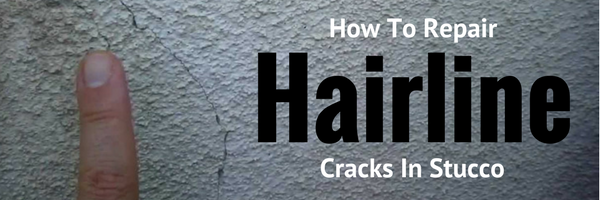
Many homes that have stucco as an exterior coating have cracking issues, but most of them can be repaired quite easily.
There are different kinds of cracks that appear and knowing how to go about fixing them is half the battle.
There are different kinds of cracks, distinguished mainly by their size and pattern on the wall itself.
One can determine the cause of the crack by looking at the wall’s design, the size of the crack and the pattern.
Hairline cracks are anywhere from 1/16 of an inch to 1/8 of an inch wide (typically) and are easily and effectively repaired using caulking and paint, in most cases because it is the most economical approach for most people.
What You Will Need For This Project:
- Caulking Gun
- Caulk (latex with silicone base is recommended, 40 year) or a sanded caulk, for rougher stucco textures
- There are also tubes that do not require a caulking gun but have much less material in them than a standard tube of caulking
- Bucket of water
- Sponge or Rag
Cut Tip Of Caulking Tube, Like This:
The first step is to cut the tip of the tube of caulking as small as possible, at an angle, if possible.
I included this as a step because it is oftentimes overlooked and can make a huge difference in the amount of time it takes to complete the project, how much cleanup there will be, the finished product,etc.
Then load the caulking gun with the tube and squeeze out some of the caulking, so your ready to go and have an idea of how much material is going to come out.
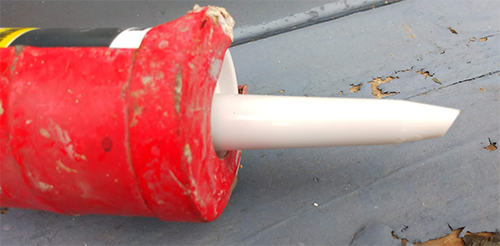
Helpful Tip: The smaller the tip, the easier and cleaner it will be to apply the caulking, the less cleanup you will have to do and the better the repair will look.
Helpful Tip: If the crack and the area around the crack has moss, staining or excessive amounts of debris visible, then using a softer wire brush first to remove the debris and clean the area is recommended.
Step 1: Wet The Wall Down Before You Do Anything...
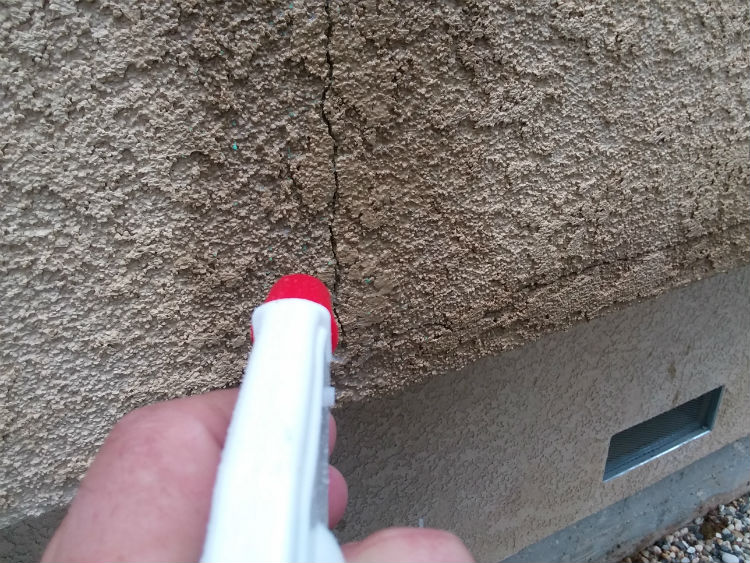
First, you will want to wet down the wall where the crack is and around the area of the crack.
Water will help with any standing dust in and around the crack and also help to move the caulk around, make it squeeze into the crack and will allow you to wipe off the excess a lot easier.
Step 2: Apply The Caulking To The Crack
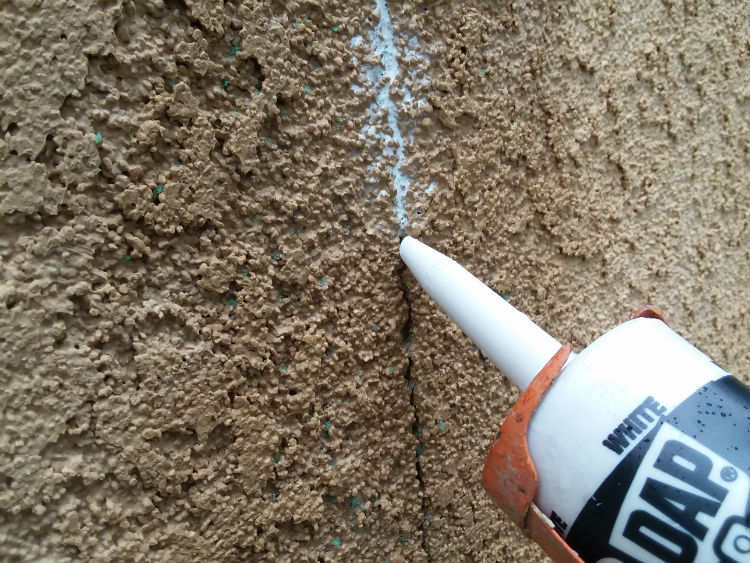
Next, you will want to apply a bead of caulk along the crack in an even and generous manner.
Use the angle on the tip to your advantage, it will be easier to fill the crack this way.
Be sure to have a consistent bead without any gaps, you will want the entire crack to be covered in a bead so it is sealed entirely.
After The Caulk Is Applied...
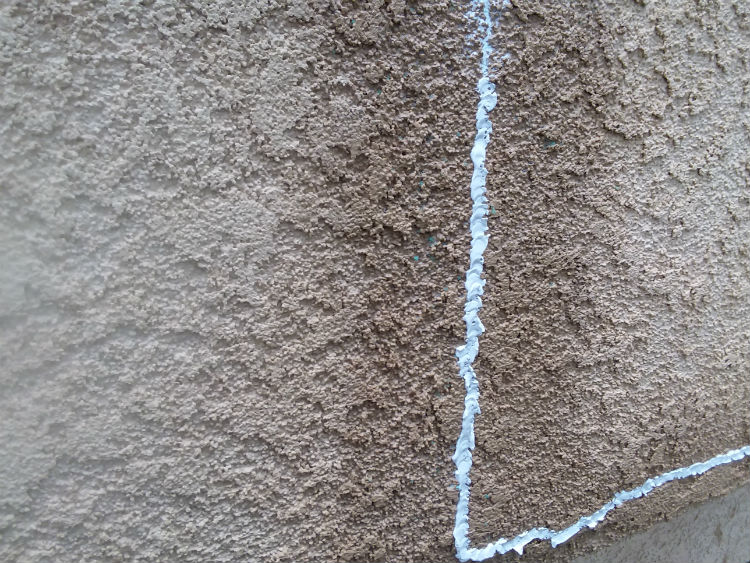
After you apply the caulking, it will look something like this (above photo).
This is where cutting the tip of the caulking tube carefully comes in handy, the smaller the crack, the smaller the opening on the tip of the caulking tube should be.
This will keep things neat and make the job come out a lot better in the end.
Step 3: Spread The Caulking Into The Crack Using Your Finger:
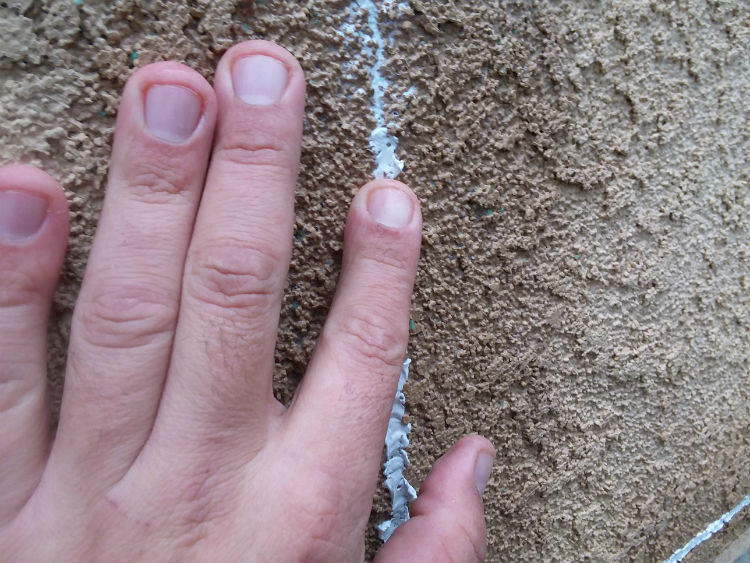
After the caulk is applied, take your finger and rub the caulk into the crack.
Try to go all directions, in order to fill the crack entirely.
Try to avoid spreading the caulk all over the wall, if you can do so, it will make the next step much easier.
Step 4: Wipe Off Excess Caulking
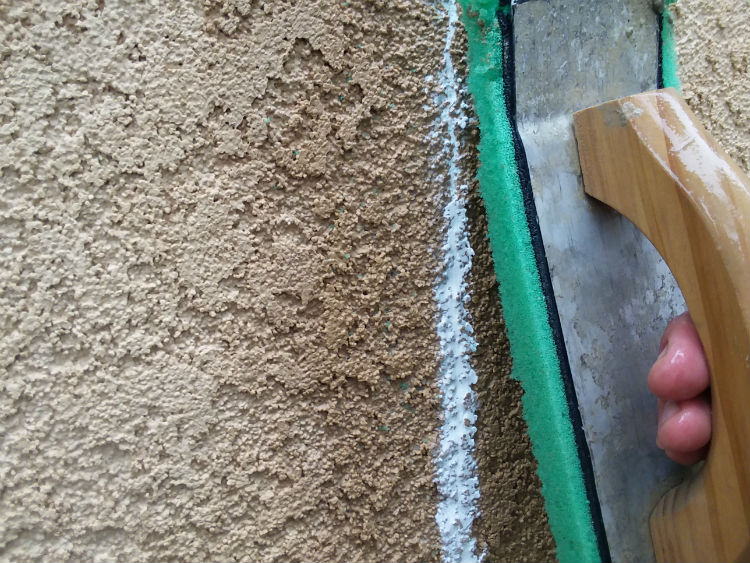
Now, take your sponge, rag or green float and saturate it in the water.
Ring it out a little bit, but keep most of the water inside, it is better to have more water than not enough.
Use the rag or sponge to clean up the area around the crack, while keeping the caulking inside of the crack itself.
Do not worry if you are shy on material here because we will end up applying a second coat that is textured and will fill in the rest of the material you need.
Just make sure that the entire crack is filled and you didn’t miss any spots, this is critical in this step!
Helpful Tip: The final product should just have the caulking inside the crack and nowhere else.
Try to clean around the edges as good as you can for a better end result.
You Will Have Something That Looks Like This:
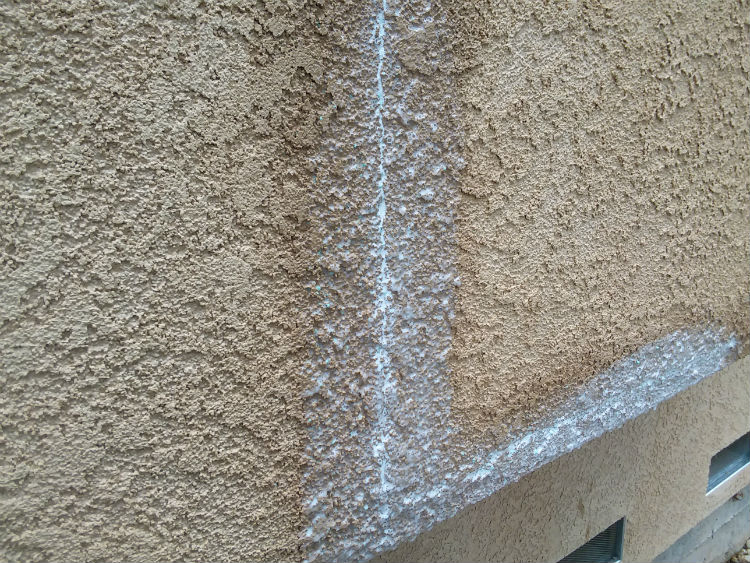
After you wipe off the excess coating using your green float, rag or sponge, you will have something that looks a little bit like the picture above.
Most of the caulking is sitting inside the crack which is where we want it and the watery white residue around the crack is water that has just a very small amount of caulking in it.
This will have to be removed if you are not planning on painting, otherwise you will see a slight difference in color after you are done.
Step 5: Clean Off Excess Water/Caulk Residue Around Crack...
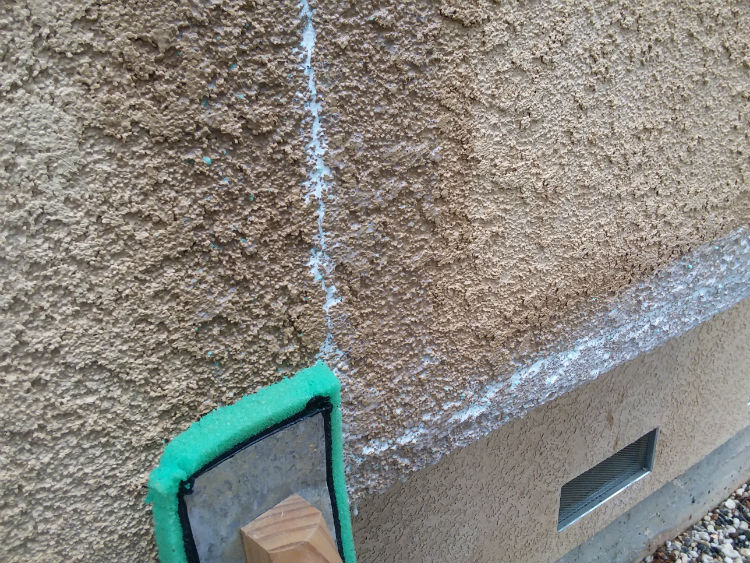
Let The Caulking Dry
Let it dry for a day, or a few hours, depending on the instructions , weather, temperature, etc.
Caulking has a tendency to shrink up a bit, which will work to our advantage, in this case.
We will apply another coat of caulking the same way we did previously but add a little texture this time around, to match the existing texture.
The second coat of caulking is optional and is usually not carried out by most people, as it takes more time, energy and resources. Sometimes one application of caulking is enough to fix the crack.
Texturing The Second Bead Of Caulking (Optional):
After we apply the second bead of caulking and wipe off the excess, we will want to add a bit of texture to make the repair blend in a little better.
Before you try to texture to the wall, play with it on a piece of cardboard to try and simulate the texture and find out what methods (dabbing with a brush, using a sponge, etc.) will match the existing texture the best.
- If you have a smooth texture, then this will be easier to do and will only require (in most cases) to keep reapplying caulking until it is flush with the finish and make sure there are no “hard lines” in the caulking, everything should blend in naturally.
- For moderately heavy to heavier textures, a brush used in a dabbing motion would match the existing texture better.
Experiment first, like I mentioned earlier to see what method works the best for your texture. A sanded caulk would work better for rougher stucco textures and be easier to achieve a more seamless repair.
Step 6: Apply Color To The Repair (Optional):
For the repair to be complete, you will need to apply a matching color coat on top of the area you fixed and possibly the entire wall, so it blends in better.
Most folks just paint the wall and is probably the easiest method and most cost effective one.
If you want to avoid painting, then look into a fog coat (traditional cement based finish) or an acrylic finish that was used on your home (custom color matched) that has the aggregate taken out of it.
You can achieve this by running the material through a mesh paint screen, which will keep the color in tact but remove the aggregate to make a custom acrylic paint.
Helpful Tip: It is hard to match the color of stucco exactly.
It is porous and the color matching programs that are used these days will pick up on the “shadowing effects” that the uneven surface of the finish has.
Keep this in mind if you are planning on painting and need to have your stucco color matched.

